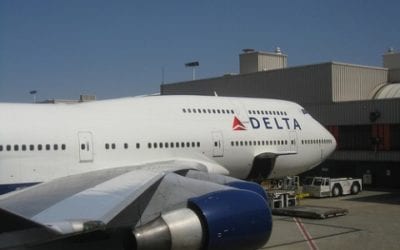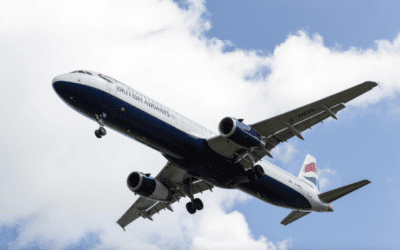As airlines cut back their schedules, a connecting flight may be your only choice to your destination. As winter approaches, those connections have more and more potential for trouble. But while there are no guarantees in travel, there are ways to increase the odds of getting to your destination.
It’s not just the obvious warm weather-cold weather airport issue. Yes, it is more likely to snow in Chicago or Denver. But the worst airports for delays are usually the New York area airports, and many airlines connect through JFK and Newark. In addition, Miami routinely also shows up near the bottom of the list, while Salt Lake City often has some of the fewest delays.
1. Look — or have a travel agent look — at the previous month’s on-time statistics. Most airline reservation systems list the on-time statistics for flights after the availability. The system isn’t perfect, as it doesn’t include mechanical delays or commuter planes, but it’s a good start. If there’s a scheduled 45 minute connection and the first plane has been late more often than the second, it might be worth rethinking that option.
2. A safer airport might also mean more miles. Flying between say, San Francisco and Tampa on United Airlines could mean going through Chicago, for about 2,855 miles. But flying through Dulles, with less chance of bad weather, does take longer but also means racking up 3,329 miles.
3. Look in advance for backup flights. If an arriving flight is late, but there are several other flights to your final destination, then it’s safer to risk the connection. Of course, throw this rule out the window around the holidays, when the later flights are likely to be full.
4. Get as close to your destination as possible with the first flight. This is a big one. A missed connection in say, Chicago to somewhere the midwest does mean that driving is a last-ditch option, even if a lousy option. A train might be an option on the east coast.
5. On the same note, for international flights, getting overseas with the first flight means a better chance of finding a backup flight. Going to Berlin and and missing a connection in Frankfurt means trying to get on one of many frequent flights between the two cities. Missing a connection in JFK usually means spending the night in New York.
5. For international flights, if frequent flier miles or costs mean that a U.S, the connection is the best option. Often, you’ll find longer connections available than the first one shown by the airline. Delta routinely schedules short connections to international flights in JFK and Continental does the same in Newark. Booking an earlier first flight might result in extra airport down time, but can also mean a lot less stress, and a better chance of making the plane.
6. As bad as airline service is within the U.S., most carriers still do a better job on their international service. This means free meals, more entertainment choices, and usually bigger, nicer planes. So if there’s a choice of going Munich to Los Angeles to Las Vegas, as opposed to Munich to Washington-Dulles to Las Vegas, the Los Angeles option means more travel time on a more comfortable flight.
7. For last minute trips, check the weather reports. Yes, it may not snow much in Atlanta or Charlotte, but those airports, for example, are not used to dealing with winter weather. A few flakes in an airport without much snow removal equipment could mean a longer delay than a blizzard in Denver or Minneapolis.
And finally, if despite good intentions and careful planning, you still arrive and discover you have missed your connection, have the number of your travel agent handy, or the customer service number of your online agency. It’s almost always faster to have someone look for options over the phone rather than just waiting in what will probably be a long line of stranded fellow travelers at the airport.



